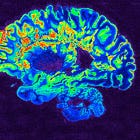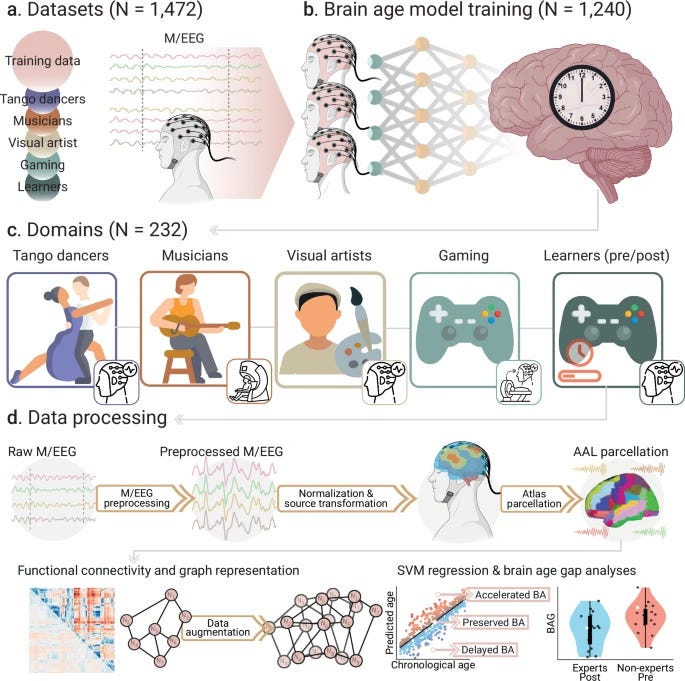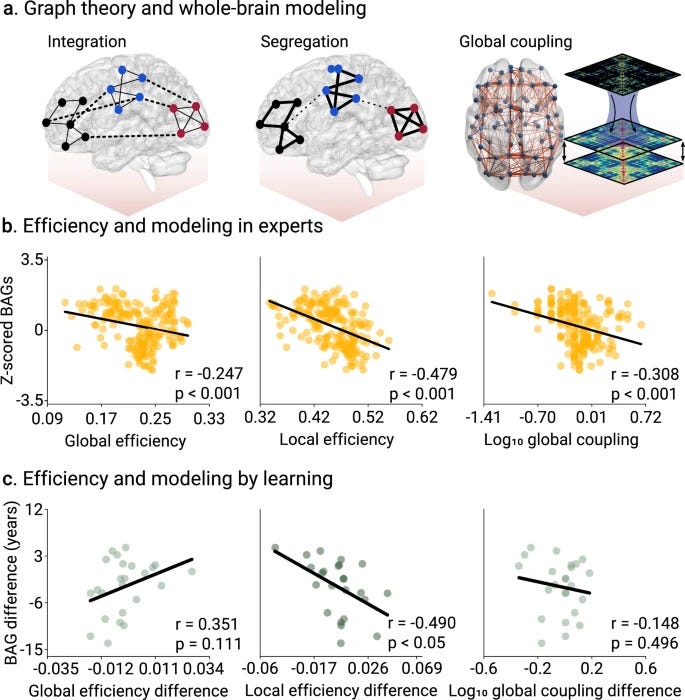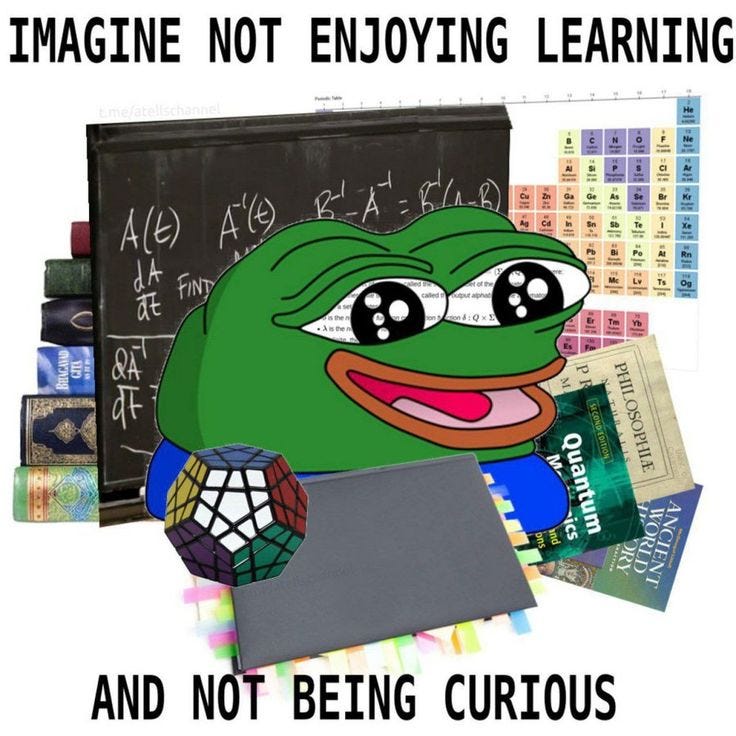How creativity and gaming help your brain heal and stay young
Gamers take another W
Song for your listening pleasure.
Another quicker one by the simple fact that it is fun, informative, and highly beneficial. I will avoid adding layers of complexity by citing many articles I wrote, as this counteracts the detrimental, often neurodegenerative effects of both inflammation, stress, and as it has been my focus for years, SARS-CoV-2.
Over the past 18 months, in certain articles covering the aforementioned negative effects, I would add some recent and interesting new scientific research on how to combat such effects, especially when I cover the topic in relation to children.
In the article above, I quickly cited an article that used a large database following almost half a million people over a few years, and the impact of playing computer games, and the finding was that gaming is associated with decreased risk of dementia, better cognitive function, and better brain structure itself.
Creative experiences and brain clocks
This research does not cover only gaming, it also covers creative experiences and activities, including playing games, dancing, art, and music. Creative activities have long been proposed as a cheap, easy-to-prescribe intervention that can be easily adopted by large populations, as both a means to treat and to protect from neurological decline. Being curious and using your imagination are both textbook definitions of “creativity”.
To do this, they first built a “brain clock”. They fed M/EEG data (measuring electrical and magnetic brain activity) from 1,240 healthy individuals into a machine learning model. Using a process called source localization, they transformed the signals from the scalp into a 3D map showing which specific brain regions were active. They then used a labelling software to basically transform the M/EEG data into a “bird’s eye view” of the brain activity, so you know from which area the signal and data originated from.
The last step after calculating the functional connectivity of the brain (which areas of the brain connect to others and how strongly), they used a machine learning algorithm called SVM (Support Vector Machine), which finds and learn complex patterns in the data and finds what is most predictive of the “brain age”. This allowed them to calculate the Brain Age Gap (BAG), the difference between the model’s predicted brain age and a person’s actual chronological age.
Across all experts combined, there was a significantly lower BAG compared to non-experts, meaning experts experienced slower brain aging compared to their counterparts, the average was 5.5 years younger, but the breakdown.
Tango dancers’ brains were 7.1 years younger.
Musicians’ brains were 5.4 years younger.
Visual artists’ brains were 6.2 years younger.
Gamers’ brains were 4.1 years younger.
A second part of the study, gaming as a means to measure it, specifically StarCraft II, a Real-Time Strategy game that has fast gameplay, depth and complexity, hard to master, quick to learn. Here they are classified as learners, and each acts as their own control, before and after learning, and serves as a short-term analysis. Short-term learning also worked, and after just 30 hours of training in StarCraft II, their brains were 3.1 years younger.
In the Expertise part of the paper, years of practice in music, or months in dancing equated to younger brains, meaning the more skilled one becomes, the younger the brain appeared to be. In the second part, the Learning, they measured in-game performance by using Actions Per Minute (APM) as a key skill for the game (it is a key skill in many games, but the most important in games like StarCraft, and Action games).
The learners who improved faster, as measured by APM, were the ones who showed the greatest reduction in brain age, demonstrating that you need to actively engage in the skill or skill acquisition to benefit from these effects. Next, it was the mechanistic part of the research.
By looking into the training data for their machine learning model, they built a map of brain age vulnerability, which parts are more susceptible to it, followed by how each region goes through alterations. Both groups, experts and non-experts, and the learners had the same susceptible region, the frontoparietal hubs, a region that loses connectivity strength as we age.
This region is a complex network of parts of the brain responsible for cognitive control, goal-directed behavior, problem-solving, reasoning, and adapting to new tasks, also involved in working memory and attention.
They found that there was a strong positive correlation between a region’s vulnerability to aging and the degree to which it was strengthened by creative practice. In the Experts group, the brain regions that were strengthened were associated with motor control, rhythm, coordination, visual salience, and movement.
In the Learners, gamers group, the regions that experienced improvement were primarily linked to attention, visual perception, object recognition, and cognitive control. The act of practicing a creative skill or engaging specific parts of the brain is exactly what activates this neuroplasticity that slows brain aging.
The last part of the research was using a common tool in many fields, graph theory, to analyze the brain’s network and its connectivity, to measure important metrics. Local efficiency measures how well information is processed within localized clusters in the brain (network specialization and segregation), and global efficiency measures how well information is communicated across the brain (network integration).
They found that the more specialized and efficient in local information processing a brain was. One of the main effects of brain aging and accelerated neurodegeneration, such as the one observed in SARS-CoV-2 is the loss of specialization. Creative experiences and activities directly remediate and help the brain heal by maintaining a highly efficient, modular neurological network.
They discovered that in the expertise group, a lower BAG was significantly correlated with higher global coupling. This suggests that long-term creative practice leads to a fundamental change, increasing the efficiency and strength of communication across the entire brain. This effect was strong in experts but not yet present in the short-term learners, indicating it is likely a result of sustained, long-term neural plasticity.
I will cite a couple of other papers.
Based on the MR approach, we have found a positive effect of computer gaming on the development of players’ cognitive function and fluid intelligence. In summary, our findings provide genetic evidence that computer gaming promotes the development of players’ cognitive function.
Association of Video Gaming With Cognitive Performance Among Children - “video gaming may be associated with very small cognitive performance enhancement involving response inhibition and working memory, and with alterations in underlying cortical pathways”
Efficacy of the use of video games on mood, anxiety and depression in stroke patients - Rehabilitation VR used as an adjuvant treatment to conventional treatment has a beneficial impact on the neurological status and state of anxiety of stroke patients admitted to neurorehabilitation units.
A summary of the findings and the eternal state of my soul and mind. Consider becoming a paid subscriber, and if you are one, thank you =D.






Trivia. I draw, used to paint, played guitar when I was younger, and was semi-pro in FPS (Counter-Strike) when I was much, much younger.
Go do something creative. Preferably while in nature, compounding brain gains.
It's interesting that 90% of formal education is not geared toward creativity or movement. What is the goal of school anymore?
It's hard to do something creative everyday, but putting it on a to-do list may help. Dancing (tripping is more like it) through the tulips is all that happens on most days but articles like yours give me renewed determination to take time for the fun of life.